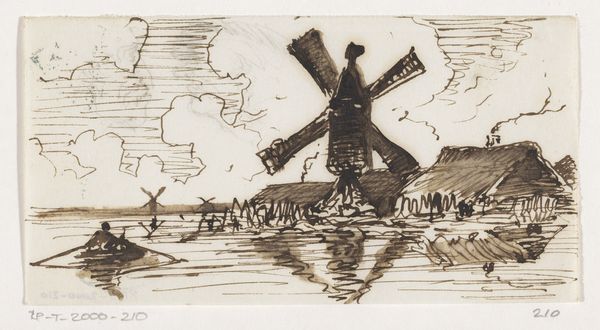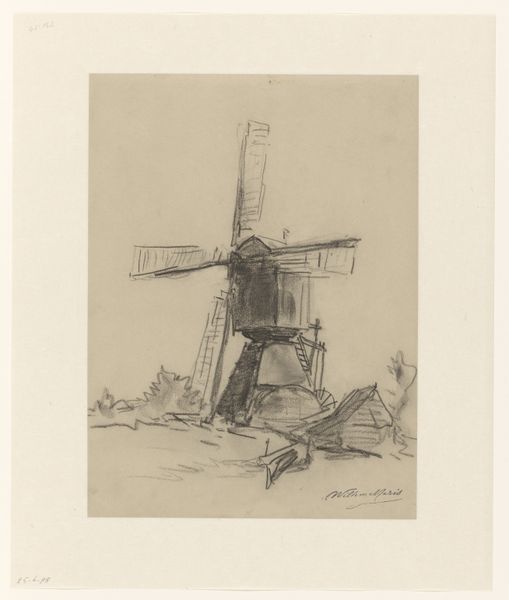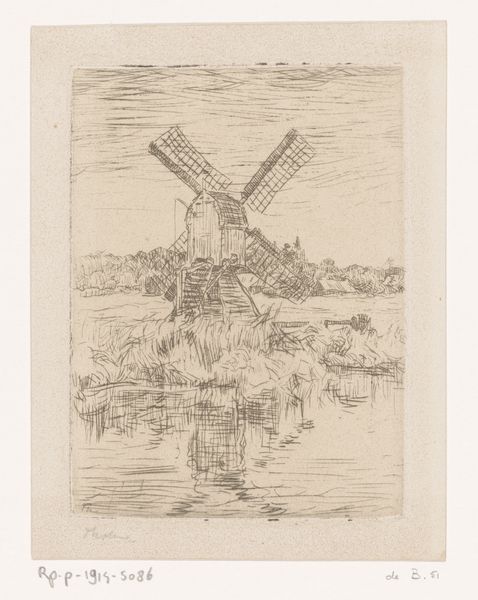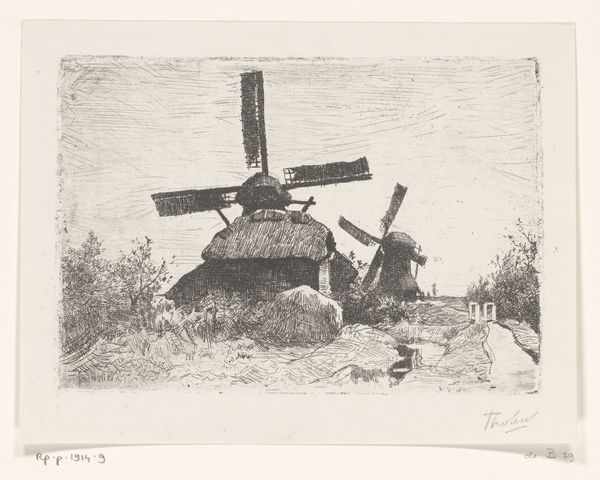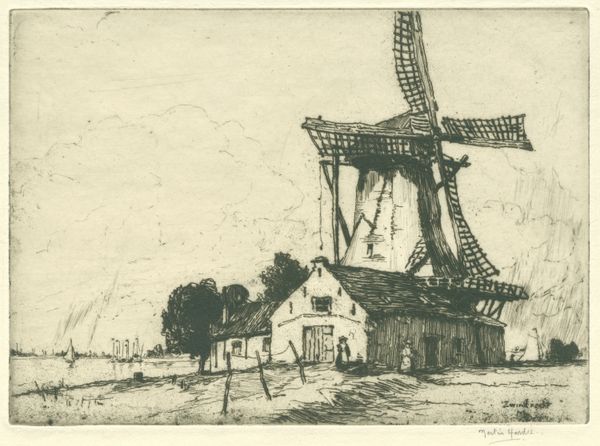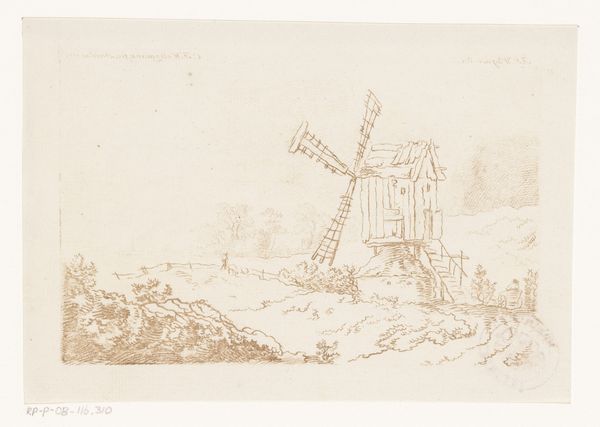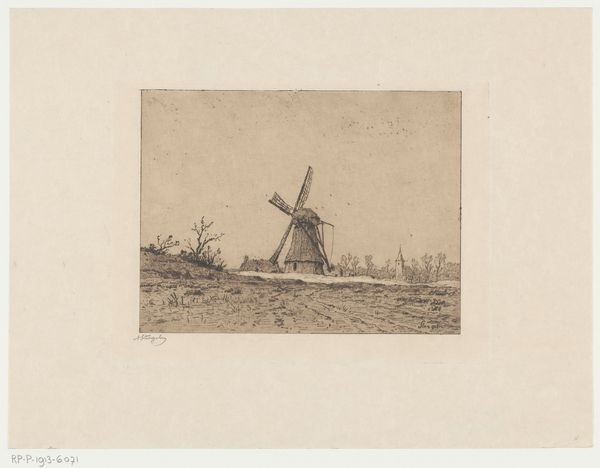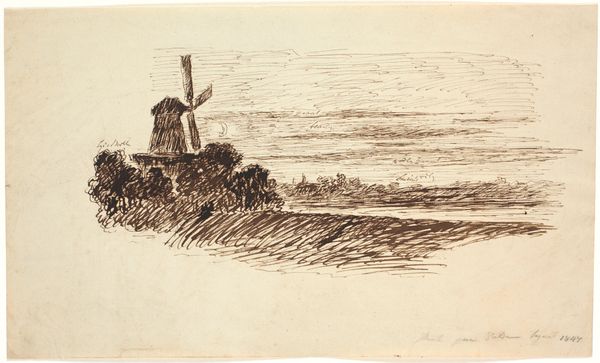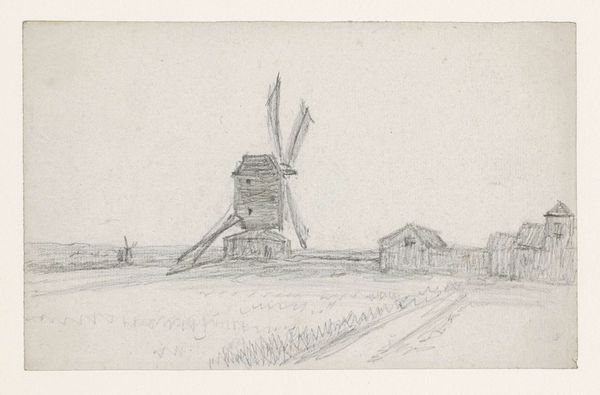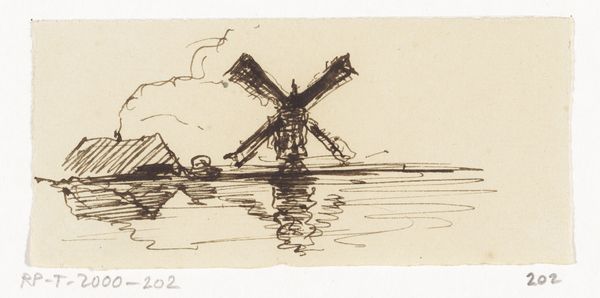
drawing, pencil
#
drawing
#
dutch-golden-age
#
pencil sketch
#
landscape
#
pencil
#
realism
Dimensions: height 333 mm, width 571 mm
Copyright: Rijks Museum: Open Domain
Editor: So, this is "Windmolen, met stad in het verschiet" – "Windmill, with city in the distance" – a pencil drawing by Willem Bastiaan Tholen, created sometime between 1870 and 1931. There's such a stillness to it, like a snapshot of a simpler time. What strikes you when you look at this piece? Curator: The stark contrast between the industrial windmill and the barely-there city hints at a societal shift. We see a rural scene, but with this growing urban presence on the horizon. It reflects the period's tensions as Dutch society was changing and how those shifts were being represented in the visual arts. Does this preliminary sketch influence your interpretation? Editor: It makes me think about capturing a specific moment, almost like documenting something that’s about to disappear. Why do you call it documenting rather than representing a Dutch scene? Curator: The precision of the drawing style feels almost archival. Consider the political weight given to seemingly ‘neutral’ landscapes during this period; they became symbols of national identity at a time of great upheaval, reflecting cultural anxieties around industrialization. Do you think Tholen intentionally positions the windmill as dominant or as threatened by the cityscape? Editor: That’s a really interesting point. It's hard to say! Maybe it's a commentary on progress or the loss of traditional ways of life. Thanks; I'll have to look at this one a bit more closely now. Curator: Absolutely! It is fascinating to consider art beyond its purely aesthetic elements, considering art's socio-historical implications in depicting everyday scenes. I will view this drawing with refreshed perspective going forward as well.
Comments
No comments
Be the first to comment and join the conversation on the ultimate creative platform.
